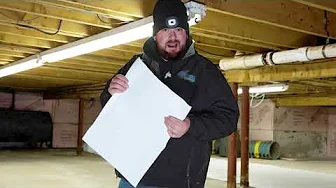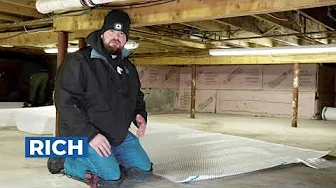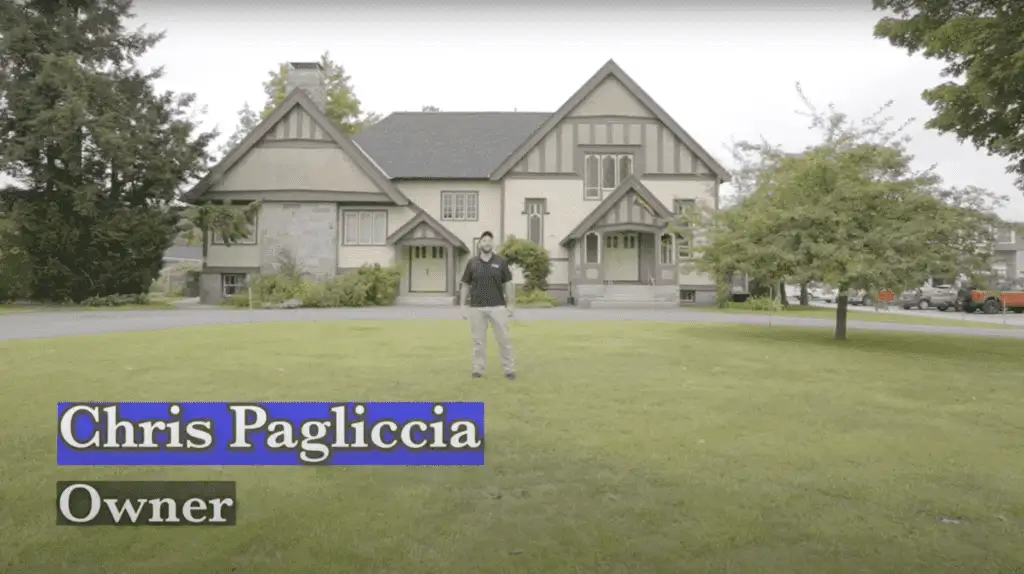Basement Finishing Hampton Falls NH
Basements hold significant potential for both functional and creative uses. In Hampton Falls, NH, residents are discovering the value of transforming their unfinished basements into useful, livable spaces. Whether you need extra storage, a home office, or a recreational area, a basement upgrade can add both space and value to your home.
Real People - Real Great Results
Crawl Space Video Playlist
Why Basement Finishing Matters in Hampton Falls NH
Not all homes come with extra space to spare, and in Hampton Falls, where space can be at a premium, basements often hold the key to unlocking a home’s full potential. Unfinished basements are like blank canvases—full of what-ifs and what-could-bes. Finishing that space means turning “just storage” into so much more.
Take usable space, for instance. A finished basement instantly transforms square footage that was previously underutilized. Whether it becomes a quiet corner for hobbies, a lively hub for family movie nights, or a serious home office setup, this extra room can adapt to whatever life throws at you.
But it’s not just about space—it’s about investment. In terms of resale, homes with finished basements often stand out in the Hampton Falls market. A polished, well-thought-out basement can make potential buyers picture their own future there. And as a bonus, the return on investment is typically solid, making the upgrade worthwhile even if you’re not planning to sell soon.
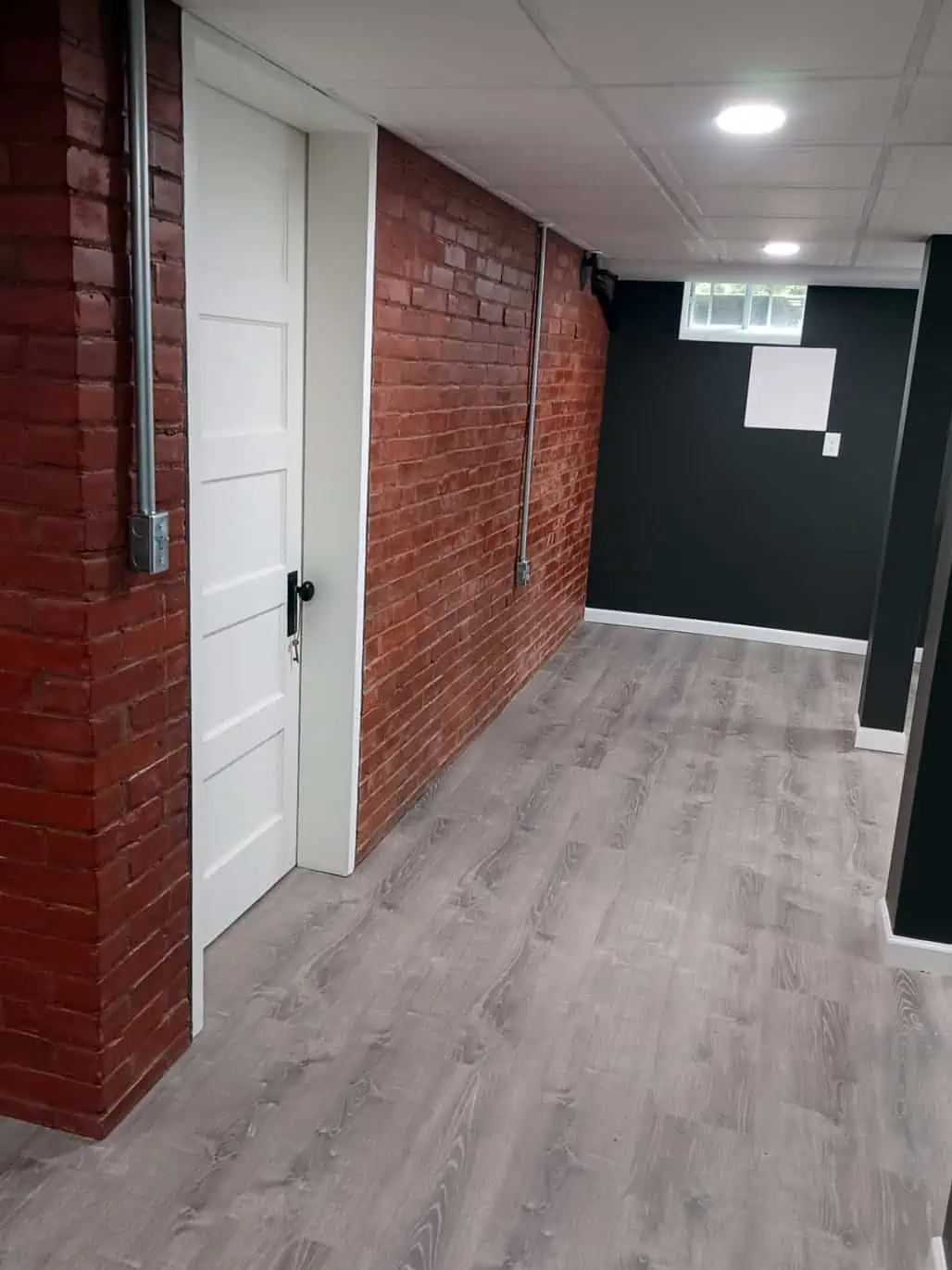
There’s also an often-overlooked payoff: energy efficiency. Basements are notorious for being drafty or damp. By adding insulation during the finishing process, you seal off those energy-draining gaps. That means lower utility bills and a home that feels cozier year-round.
And let’s talk about longevity. Finishing a basement isn’t just a cosmetic improvement—it’s also an opportunity to address potential threats like moisture or structural vulnerabilities. Properly handled, the process can resolve small issues before they turn into major headaches, giving your home a longer, healthier lifespan.
In short, finishing your basement isn’t just about making your house bigger—it’s about making it better. In Hampton Falls, where the charm of small-town life meets the realities of modern living, a finished basement is one of the smartest ways to level up your home.
Common Uses for Finished Basements
Your basement can be anything you need it to be—beyond its typical reputation as a cluttered storage cave. When finished, it becomes a blank canvas where practicality meets creativity, with multiple ways to enhance how your home serves you. Below are some of the most popular transformations Hampton Falls residents are taking on:
- Additional Living Space: If you need extra breathing room, finishing the basement is an obvious move. It can be turned into a guest bedroom for visiting family or friends with minimal work. Want something more versatile? Try a cozy second living room for lounging or even a private rental suite for added income. The flexibility here is hard to beat.
- Home Office: Remote work doesn’t seem to be going anywhere, and neither does the need for a distraction-free workspace. A basement home office offers what you can’t always get upstairs: peace and separation. Add a standing desk, soundproofing, and some decent lighting, and you’ll have a setup where you might actually enjoy those Zoom calls.
- Entertainment or Recreation Area: This one’s a classic. Whether it’s a home theater, a gaming hub, or a personal gym, a finished basement gives you space for the kind of activities that might feel cramped upstairs. Big screen, surround sound, maybe a minibar—it’s an upgrade that guarantees family fun nights or post-work decompression.
- Kid or Teen Hangout: Kids need space, and let’s be honest, sometimes so do you. A finished basement can be their domain—a playroom for younger kids or a hangout spot for teens with a couch, a TV, and maybe some beanbags and table games. It’s the kind of win-win arrangement where everyone gets their own corner of the universe.
- Storage Solutions: Even with all the transformations you can dream up, storage is still king. The beauty of finishing your basement for storage is that it’s no longer just a dumping ground—now, you can have organized racks, cabinets, or even built-in storage that blends seamlessly with the rest of the design. It’s the smarter way to keep your home clutter-free without sacrificing style.
Smart, practical, or fun—whatever your goal is, finishing your basement unlocks opportunities. And because it’s your space to define, the possibilities are only limited by your needs and imagination.
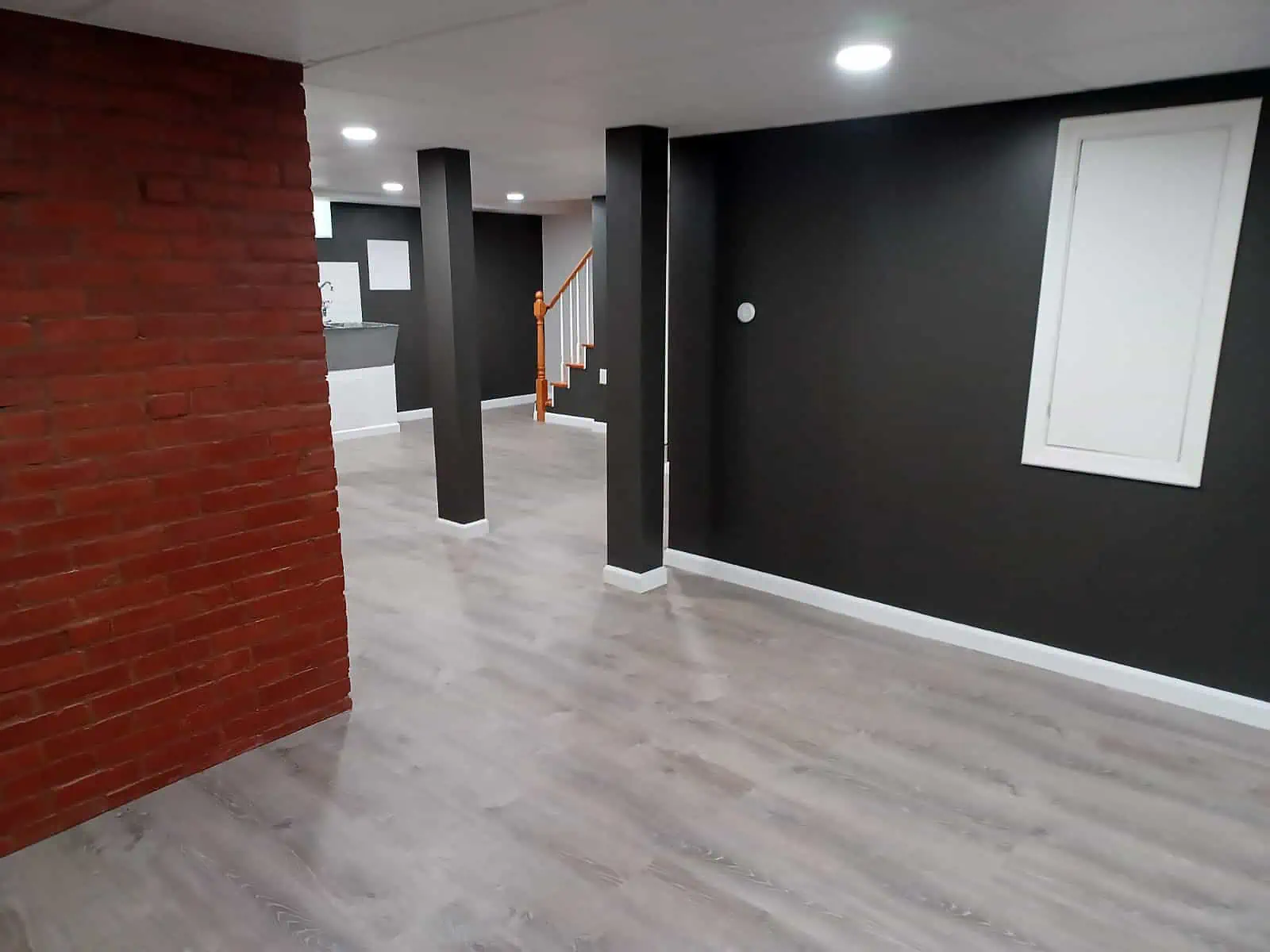
Essential Steps to Basement Finishing
- Assess and Plan: Begin with a hard look at the space. Is the floor level? Are there signs of water intrusion? How low are the ceilings? These aren’t minor details—they’re the foundation of your project. No amount of paint or décor can fix structural red flags. Sketch out your vision, but do it with measurable practicality. Is this a guest suite, an office, or a man-cave? Decide now, not mid-project.
- Address Moisture and Waterproofing: If your basement has even a whisper of dampness, address it before picking paint colors or flooring options. Moisture is the silent killer of finished basements. Seal any cracks in the foundation, waterproof the walls, and if the space is flood-prone, install a sump pump. It’s not exciting, but neither is mold creeping into your new drywall.
- Insulation and Ventilation: Basements aren’t naturally cozy. To fix that, invest in quality insulation to retain warmth and guard against drafts. Pair that with ventilation—good airflow keeps the space comfortable and prevents it from morphing into a humidity trap. Without proper circulation, your basement can go from snug to stale quickly.
- Flooring and Walls: Opt for materials that can take a hit from moisture or temperature swings. Vinyl plank flooring? Durable and moisture-resistant. Carpet tiles? Easy to replace if something goes wrong. Drywall? Stick to the moisture-resistant variety. These aren’t just aesthetic choices; they’re about longevity and practicality.
- Electrical and Plumbing: This is where you call in the pros. Adding lighting, outlets, or plumbing? They need to meet local codes—no exceptions. Botching this step can derail the whole project and, worse, create safety risks. Don’t shortcut here.
- Lighting and Design: Basements are naturally dark, so lighting is your best friend. Layer it. Use recessed overhead lights, add wall sconces, and throw in a couple of floor lamps for ambiance. Color matters, too—stick to light neutrals to reflect what little natural light exists. If you want to avoid the dreaded “basement cave” effect, don’t scrimp here. Adding mirrors? Clever move. They fake more light and make the space feel bigger.
Navigating Local Building Codes in Hampton Falls NH
Before you even think about swinging a hammer or picking out paint, you’ll need to get familiar with Hampton Falls’ building codes. Basement renovation is not just about aesthetics; it’s about safety and compliance. Permits are almost always required, and skipping this step is a fast track to fines, delays, or worse—tearing out work you already did.
Here’s the deal: local codes in Hampton Falls cover everything from ceiling height minimums to egress windows for emergency exits. If you’re adding walls, plumbing, or electrical wiring, expect the rulebook to come into play. Staircases need to meet specific requirements for tread depth and riser height, and fire safety measures like smoke detectors must be properly installed and positioned. While it may feel like jumping through hoops, these rules exist to protect your household, especially in a space as sensitive as a basement.
Consulting a local contractor can save you a headache—or ten. They speak “building code” fluently and understand what inspectors in Hampton Falls look for. Plus, they’ll handle submitting permit applications and scheduling inspections, letting you keep your eyes on the prize: a properly finished basement. Sure, it might be tempting to wing it, but trust me, you don’t want your project stalled because you overlooked a regulation. Do it right the first time. You’ll thank yourself later.
DIY vs. Hiring Professionals
Basement finishing is not for the faint of heart. Sure, DIY sounds tempting—it’s cheaper upfront, gives you full control, and lets you flex your weekend-warrior muscles. But before you dive in headfirst with a hammer and Pinterest board, let’s talk reality: there’s a big difference between slapping paint on a wall and turning an unfinished basement into a safe, functional, livable space.
If your idea of a DIY project is assembling flat-pack furniture, this is probably a job best left to the pros. Structural changes? Not a DIY zone. Electrical wiring? Definitely not a DIY zone—unless you’re oddly fond of power outages or fire hazards. And don’t even get us started on plumbing. One overlooked leak could turn your dream basement into a very expensive indoor swimming pool.
When professionals handle the job, you get expertise, efficiency, and peace of mind. They know the ins and outs of building codes in Hampton Falls, NH, which means your project won’t hit legal snags halfway through. And let’s face it: basement projects are rarely as straightforward as they seem on YouTube. Pros have seen it all—uneven floors, ancient ductwork, unexpected moisture problems—and they can navigate these challenges without breaking a sweat or your bank account (well, within reason).
That said, DIY isn’t off the table entirely. If you’re handy and know your limits, you can take on parts of the project to cut costs—like painting walls, installing shelving, or laying peel-and-stick flooring. But for the heavy lifting (literally and figuratively), investing in reputable professionals is worth every penny. Sometimes, success in home improvement is knowing when to pick up the phone instead of the power drill.

Cost Considerations
Basement finishing costs in Hampton Falls, NH, can span a wide range, depending on the specifics of your project. On average, homeowners should expect to spend anywhere from $25 to $50 per square foot, but this number can climb if you’re aiming for high-end finishes or complex upgrades.
Start by breaking down your budget into key components. Waterproofing the space is a non-negotiable first step, with costs typically ranging from $1,500 to $6,000 depending on issues like existing cracks or the need for a sump pump. Insulation and ventilation, which can directly impact both comfort and energy efficiency, usually add another $1,000 to $3,000 to the total.
For flooring and walls, materials drive costs. Basic options like carpet tiles or vinyl plank flooring are budget-friendly, while hardwood-look tiles or polished concrete sit at the mid-range. Premium choices like engineered hardwood or intricate tile work push expenses higher. Wall finishing also varies—moisture-resistant drywall is standard, but exotic finishes or wainscoting can tip things into luxe territory.
Plumbing and electrical work? That’s where projects tend to swell in complexity and cost. A simple lighting setup runs a few hundred dollars, but adding a bathroom or kitchenette can add anywhere from $5,000 to $15,000, depending on layout and fixtures. Make sure to allocate funds for permits and inspections, which are requirements under local codes and could cost you several hundred dollars more.
Lastly, don’t skimp on design touches like lighting fixtures, paint, and furniture. These might seem minor, but they bring the space to life and can quickly add a few thousand dollars to the final tally. Keep at least a 10% buffer in your budget for unexpected expenses—because in home renovations, surprises are almost a guarantee.
Smart budgeting ensures you get the most for your investment while avoiding financial stress. Know where to save and where to splurge, and you’ll end up with a finished basement that’s as functional as it is beautiful.
Long-Term Maintenance
Your finished basement is only as good as the care you put into it. Start by making moisture management a priority. Invest in a dehumidifier to keep dampness at bay and check that your waterproofing solutions—whether it’s a sump pump, drainage system, or wall sealant—are functioning as they should.
Ventilation is just as critical. Basements can easily trap stale air, leading to stuffiness or even mold growth. An HVAC system or periodic window ventilation, if possible, can keep the air flowing and your space fresh.
Beyond the structural aspects, keep one eye open for potential trouble signs. Leaks, cracks, or bubbling paint on the walls or ceiling often signify emerging issues, so don’t ignore them. Fix them sooner rather than later to avoid larger, costlier repairs.
Routine cleaning also goes a long way. Dust, vacuum, and clean surfaces as you would any other part of your home. Decluttering the space regularly keeps it from becoming a forgotten storage zone, ensuring it remains a functional and appealing area. A well-maintained basement will reward you in the long haul—comfortably extending the value you’ve added to your home.
Make the Most of Your Basement Space
A finished basement is more than just another room in your home—it’s an opportunity to solve space challenges and elevate how you live. The key is to think of it as a blank canvas. What does your home lack? A quiet escape, a place to gather, or simply more breathing room? With a bit of effort, that unused, often-overlooked space downstairs can deliver exactly what you’ve been missing.
Practicality comes first. If storage is your goal, aim for smart shelving systems and built-in cabinets that make organization painless. For those needing a work-from-home setup, a sleek desk, soundproofing, and ergonomic lighting can turn the basement into a productivity haven. Families with kids could benefit from a multi-functional space—a corner for toys, another for cozy seating where everyone can decompress without tripping over each other.
But don’t stop at practical. Basements have one built-in advantage: privacy. Lean into that. Want a personal gym where you can grunt your way through a workout without judgment? Or a mini-theater for movie nights that won’t disturb the rest of the house? Go for it. Unlike the main floors, where function often battles aesthetics, the basement is a playground for your imagination.
The trick to maximizing this space is to tailor it. Think about what genuinely improves your day-to-day experience and double down on that. Whether it’s a utilitarian storage hub or a full-blown entertainment center, a finished basement isn’t just about adding square footage—it’s about crafting a space that gives your home, and your life, more flexibility. Make it count.
Reviews from Happy Customers
Our top priority is customer satisfaction, and we work closely with clients to understand their unique needs and goals.




